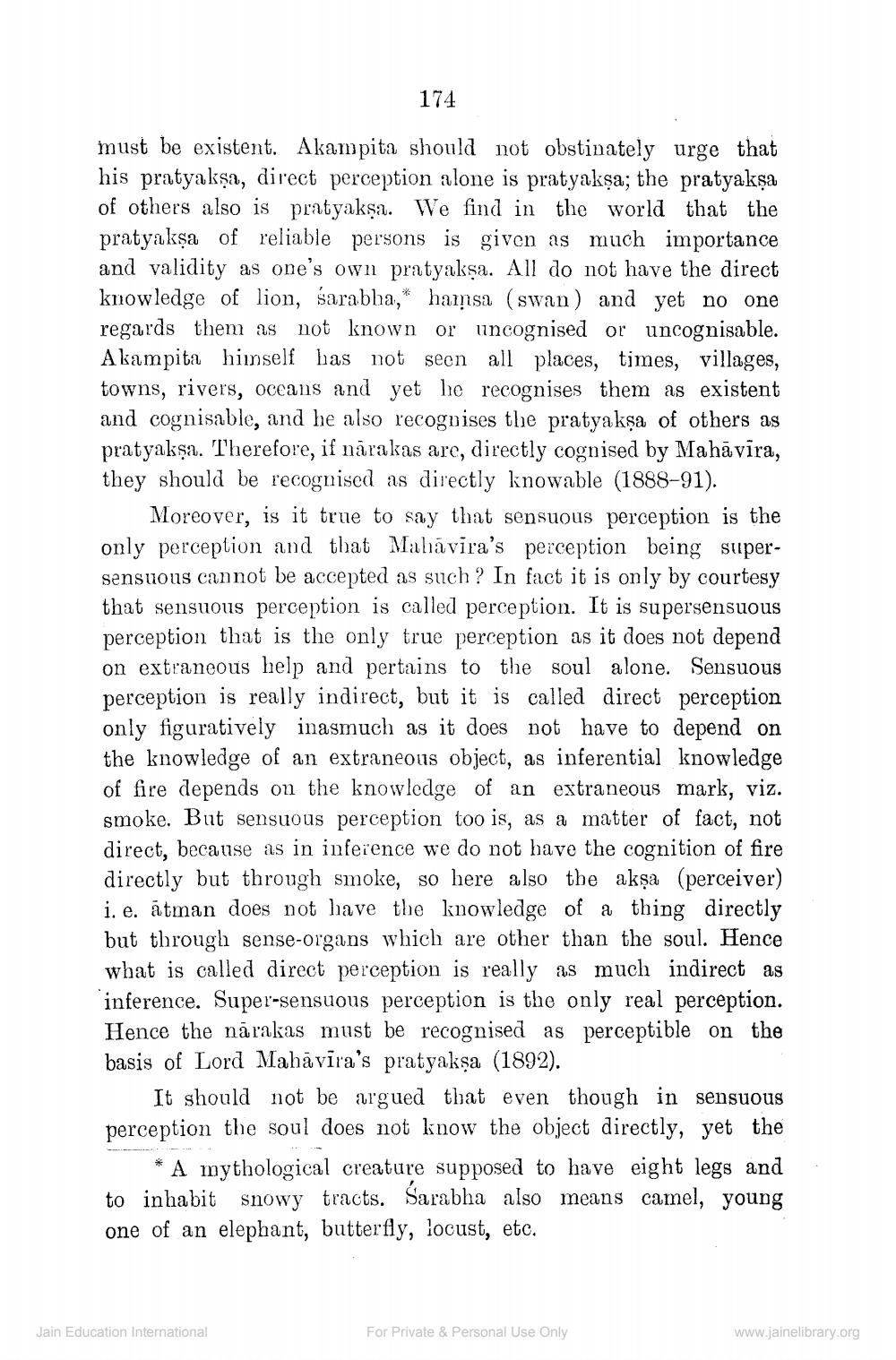________________
174
must be existent. Akampita should not obstinately urge that his pratyakṣa, direct perception alone is pratyakṣa; the pratyakṣa of others also is pratyakṣa. We find in the world that the pratyaksa of reliable persons is given as much importance and validity as one's own pratyaksa. All do not have the direct knowledge of lion, sarabha, hamsa (swan) and yet no one regards them as not known or uncognised or uncognisable. Akampita himself has not seen all places, times, villages, towns, rivers, oceans and yet he recognises them as existent and cognisable, and he also recognises the pratyakṣa of others as pratyakṣa. Therefore, if narakas are, directly cognised by Mahāvīra, they should be recognised as directly knowable (1888-91).
*
Moreover, is it true to say that sensuous perception is the only perception and that Mahavira's perception being supersensuous cannot be accepted as such? In fact it is only by courtesy that sensuous perception is called perception. It is supersensuous perception that is the only true perception as it does not depend on extraneous help and pertains to the soul alone. Sensuous perception is really indirect, but it is called direct perception only figuratively inasmuch as it does not have to depend on the knowledge of an extraneous object, as inferential knowledge of fire depends on the knowledge of an extraneous mark, viz. smoke. But sensuous perception too is, as a matter of fact, not direct, because as in inference we do not have the cognition of fire directly but through smoke, so here also the akṣa (perceiver) i. e. atman does not have the knowledge of a thing directly but through sense-organs which are other than the soul. Hence what is called direct perception is really as much indirect as inference. Super-sensuous perception is the only real perception. Hence the narakas must be recognised as perceptible on the basis of Lord Mahavira's pratyakṣa (1892).
It should not be argued that even though in sensuous perception the soul does not know the object directly, yet the
*A mythological creature supposed to have eight legs and to inhabit snowy tracts. Sarabha also means camel, young one of an elephant, butterfly, locust, etc.
Jain Education International
For Private & Personal Use Only
www.jainelibrary.org




